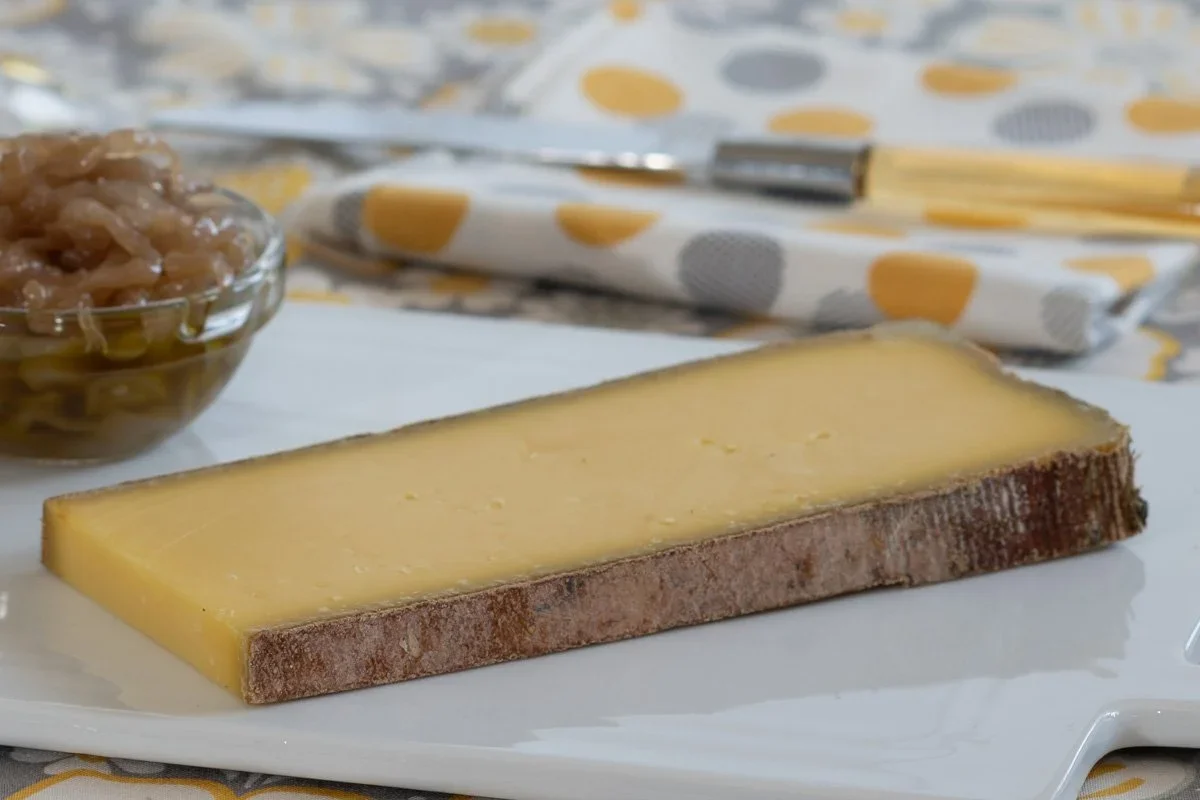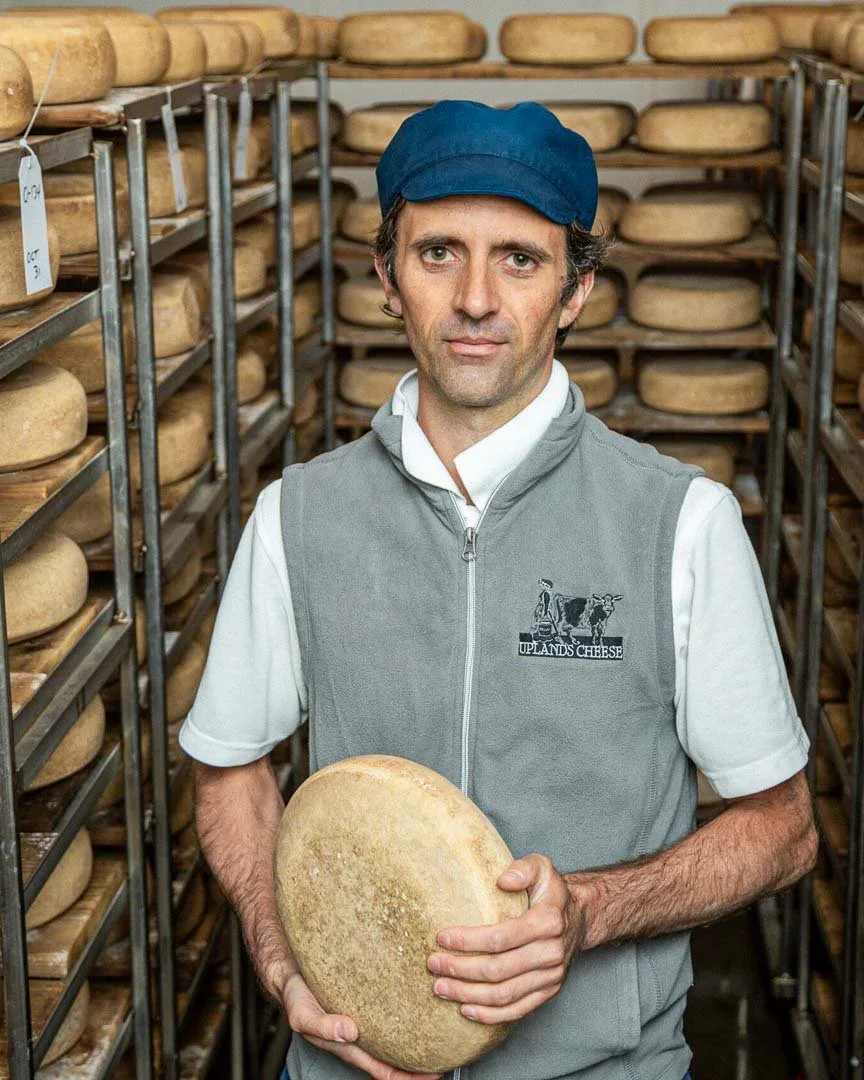With raw milk experiencing surging demand in the U.S., it seems a good moment to revisit raw-milk cheese. Almost certainly, it’s on the decline. Both here and in Europe, cheesemakers are abandoning raw milk. And almost certainly, many of the “raw milk” cheeses in the marketplace are not raw—at least not in my estimation. That’s because the definition is not as cut-and-dried as you might think. Cheesemakers disagree on what raw should mean, and package labels and websites can mislead. To help you become a more discerning shopper, I’m going to wade into murky waters and try to clarify the distinctions between raw, pasteurized, unpasteurized and thermized milk for cheese. You’ll also hear from a couple of raw-milk cheesemakers about why it’s so challenging to stay the course.
In the eyes of traditionalists, raw milk has never been heated above udder temperature (about 101°F) before cheesemaking begins. Which doesn’t mean it has never been heated. If it was chilled for transport, the milk would need to be warmed enough for the culture to work. But until it’s coagulated, milk for raw-milk cheese isn’t warmed above the temperature it came out of the animal.
Raw milk advocates: Jasper Hill Farm’s Andy Kehler (left) and Mateo Kehler
Why does this matter? Because the low temperature preserves the lively universe of microbes that contribute to flavor development down the road. “The microbial ecology of raw milk is the sum of all the practices on a farm,” says Mateo Kehler of Vermont’s Jasper Hill Farm. That’s the taste of the place—the flavor contribution of the pasture, the air, the barn, the dirt. If you leave those microbes alive and multiplying during the early stages of cheesemaking, they contribute mightily to the result. “There is a linear correlation between microbial diversity and complexity of flavor,” says Kehler, who believes his creamery may be the largest raw-milk cheese producer in the U.S.
After the milk is coagulated, the curds might be heated—a common practice for firm cheeses like Gruyère or Parmigiano Reggiano. Some people argue that such cheeses aren’t technically raw. But the cooking—more like warming—stops well below pasteurization, says Zoe Brickley, a Jasper Hill spokesperson, and the heat can actually activate some of the warmth-loving flora in raw milk.
Reliably raw milk: Meadow Creak Dairy Mountaineer
With pasteurized milk, there is no gray zone. Milk is either pasteurized (held at a certain temperature for a certain time) or it’s not. The FDA has defined the necessary holding times and temperatures to eliminate pathogens like listeria and salmonella, but pasteurization kills desirable bacteria as well.
And now for the murky part. Many cheesemakers heat their milk to eliminate bad actors, but they stop short of pasteurization. There’s no single way to heat treat, or thermize. The process allows for a spectrum of temperatures and holding times, so you might heat-treat minimally if you believe your milk is relatively clean.
But what if you heat your milk to just below pasteurization temps? You go right up to the line but don’t cross it. Can you still call it raw milk? Is the cheese you make with it raw-milk cheese? (The FDA says yes.) If you market your cheese as made with “fresh raw milk from our family farm” but you thermize, are you devaluing the work of producers who take all the costly steps to make true raw-milk cheese?
“We feel like it's stolen valor to call a heat-treated cheese raw, especially when heated to high temps,” says Brickley. Consumers who are choosing raw-milk cheese for presumed health benefits, or because they expect it to have superior flavor, or because they like supporting traditional foodways aren’t getting what they think they’re paying for.
Brickley sent me a screen shot from a web page (since removed) of a large producer of “Raw Cheddar.” The producer explains that they heat their milk to 158°F instead of to 161°F for 15 seconds, which would qualify it as pasteurized. So, yes, it’s still raw in the eyes of the FDA, but is it the raw-milk cheese consumers expect?
Persisting with raw milk: Andy Hatch
Andy Hatch, proprietor of Uplands Cheese in Wisconsin, believes he may be the only remaining raw-milk cheesemaker in his state, by the traditional definition of raw milk. True raw-milk cheese requires more skilled labor at every step, says Hatch: animal care, milk handling, cheesemaking and aging. “It requires long-term investments in animals and people,” Hatch says, and the thin profit margin in cheese makes that risky. Hatch told me that Wisconsin is losing close to a dairy farm a day. The relentless consolidation has brought larger, more automated creameries that lack the trained workforce or the driving passion to make raw-milk cheese.
Raw milk can be a competitive advantage for a small farm trying to distinguish itself, says Hatch, but not if the distinction is diluted by producers making “raw” cheese with heat-treated milk.
“There are businesses out there buying commodity milk, thermizing it and profiting from the values that are fundamental to businesses like ours,” says Kehler.
So how to preserve the value and meaning of traditional raw-milk cheese? Hatch thinks distributors and retailers should be asking more questions. Kehler looks to Europe, where raw-milk cheeses and thermized cheeses are considered separate categories, with separate standards. At the least, U.S. cheesemakers working with heat-treated milk could use the terms heat-treated, thermized or unpasteurized instead of raw.
“I’m not saying that somebody’s cheese is less worthy because it’s been heat treated,” says Hatch, “but if customers are interested in these distinctions, and I think they are, then industry should make it more clear.”




